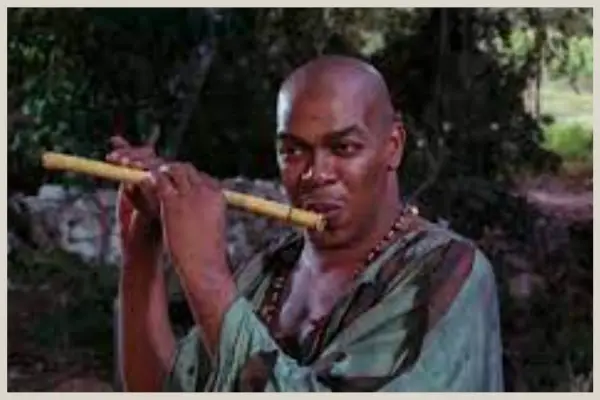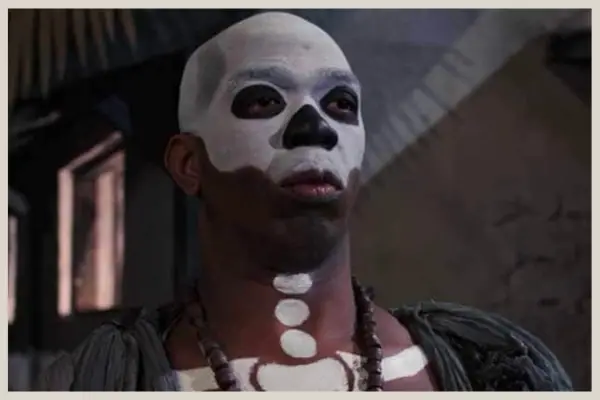Baron Samedi – The Mysterious Voodoo Villain
Baron Samedi is a character in both the James Bond novel and film Live and Let Die. In the novel, he’s a voodoo entity that Mr. Big associates himself with to instill fear in his followers. However, in the film, the later actor, dancer, choreographer, and singer Geoffrey Holder plays a separate character in the form of a henchman to Dr. Kananga.
Baron Samedi
In the novel Live and Let Die, Baron Samedi is depicted as the voodoo spirit of darkness and death. Although he doesn’t appear directly in the novel, many people in Harlem and beyond believe Mr. Big is a manifestation of Baron Samedi or possibly his zombie. Mr. Big reinforces this belief by displaying a Baron Samedi totem near his desk.
Baron Samedi is arguably the most enigmatic villain/henchman Bond has encountered on screen. The character’s true identity is unclear, leaving the audience wondering if he is genuinely the Voodoo god Baron Samedi or a mortal assuming Samedi’s persona.
In the film, Baron Samedi is first introduced as an entertainer performing a voodoo dance for tourists when James Bond arrives on the island of San Monique. The announcer refers to Samedi as “immortal,” but neither Bond nor the audience seems to give much credence to this claim.

Bond and Solitaire bump into Samedi, now without makeup and costume, sitting on a tombstone at a small abbey in the woods while en route to Dr. Kananga’s heroin fields on San Monique. Samedi appears friendly, playing a flute and remarking that it will be a beautiful day for the couple. After they leave, Samedi informs Dr. Kananga of their whereabouts using a radio hidden in his flute.
Samedi reappears later when Kananga orders Solitaire’s execution during a voodoo ceremony. Initially, it seems Solitaire will die from a poisonous snakebite, but the henchman holding the snake retreats at the last second.
Then a man with a hat approaches a nearby tombstone and places the hat on it. Two women then strike the tombstone with a machete three times and ring a bell, prompting Baron Samedi to emerge from the grave, wearing the hat.
Samedi blinks, signalling the approval to kill Solitaire. At this moment, Bond shoots Kananga’s henchmen, including the one holding the snake, before freeing Solitaire by cutting her bindings.
Bond shoots Samedi’s head, but it shatters. After repeatedly shooting the body, it becomes apparent that this wasn’t the real Samedi but a clay replica. As Bond battles more henchmen, another motionless Samedi emerges from a grave.
Bond dismisses him as another fake, but Baron Samedi suddenly opens his eyes wide and begins laughing. He grabs the machete from the tombstone and fights Bond, but Bond knocks Samedi back into a coffin filled with venomous snakes. Samedi is bitten many times, eventually falling silent and motionless, leading Bond to believe he’s dead.
As the film is ending, when Bond usually celebrates his triumphs, Baron Samedi is seen riding on the front of the speeding train carrying Bond and Solitaire. He laughs menacingly as the camera zooms in on him and the credits begin to roll, reinforcing the possibility that he is indeed a supernatural character.

Geoffrey Holder
The late actor, dancer, singer Geoffrey Holder played Baron Samedi on screen. A native of Port of Spain, Trinidad, Holder received his education at Tranquility School and Queen’s Royal College before making his performance debut at just seven years old.
After being discovered by choreographer Agnes de Mille, Holder moved to New York, where he joined Katherine Dunham’s dance school and taught folkloric dance forms. He later became a principal dancer for the Metropolitan Opera Ballet from 1955 to 1956 before making his Broadway debut in the musical House of Flowers.
Holder’s film career began in 1957 with a role as a voodoo dancer in Carib Gold. His filmography includes notable roles in Doctor Dolittle (1967), the Sorcerer in Everything You Always Wanted to Know About Sex (But Were Afraid to Ask) (1972), and of course Baron Samedi in Live and Let Die (1973), where he also contributed to the choreography.
In 1975, Holder made history by becoming the first Black man to be nominated for Tony Awards in direction and costume design, winning both for his work on The Wiz. He also received the Drama Desk Award for Outstanding Costume Design.





